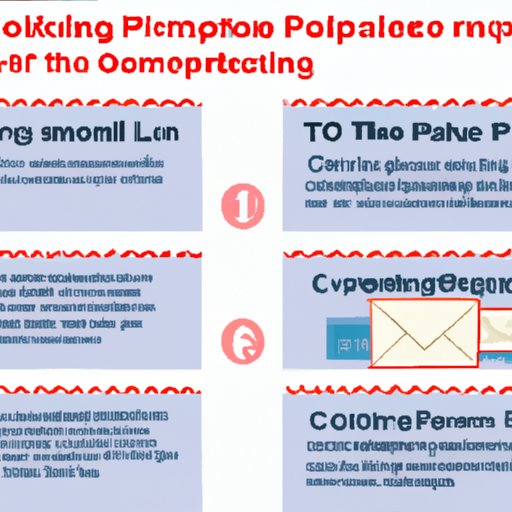
I. Introduction
Filling out an envelope for mailing may seem like a simple task, but it’s one that requires attention to detail and accuracy. A correctly filled-out envelope can help prevent delays in delivery, ensure privacy, and security, and avoid costly fines. This article provides a step-by-step guide to filling out an envelope for mailing, including addressing, postage, envelope types, common mistakes, and future trends.
II. Step-by-Step Guide to Filling Out an Envelope for Mailing
Addressing an envelope correctly is crucial for successful delivery. The envelope should include the full name and address of the recipient in the center of the envelope and the return address in the top left corner. P.O. boxes are also necessary for mail delivery to a centralized mail hub. Ensure that the recipient’s address is legible, accurate, and complete by double-checking it against the mailing information, if possible.
When it comes to postage, be sure to use enough to cover the entire cost of the mailing. The number of stamps required depends on the weight, dimensions, and destination of the letter or package. A package with insufficient postage may be returned to the sender or held for pickup, which can lead to delays in delivery. The location of the postage stamps varies based on the envelope type but is generally placed in the top right corner.
Finally, it is essential to pay attention to the orientation of the envelope. For example, if the contents are folded, ensure they are facing up to prevent interference with the sorting process. And of course, legibility is essential for successful delivery, so be sure that the handwriting and envelope quality won’t interfere with automated sorting equipment.
III. Importance of Proper Envelope Filling
A well-filled envelope is instrumental in ensuring correct and timely delivery. Postal systems rely on accurate and legible address information to make sure mail reaches its intended destination. Insufficient postage can considerably delay delivery time, and misspellings or incorrect information can send mail to the wrong location. Taking the time to fill out an envelope correctly upholds the integrity of the postal system and ensures speedier and more secure delivery.
IV. Different Types of Envelopes and Which Ones to Use
When selecting an envelope, factors to consider include size, weight, contents, number of pages, and distance traveled. Standard business envelopes are suitable for most letter mailing, but for bulkier items and packages, padded, legal, or specialty envelopes may be required. Window envelopes can save time and effort for high-volume senders, allowing the recipient’s address to show through the envelope’s window, reducing the need for addressing the envelope. Always select an envelope that is the right size for the contents, with room to include any required supplementary materials.
V. Common Mistakes and How to Avoid Them
One of the most common mistakes when filling out an envelope is addressing it incorrectly. Be sure to double-check the mailing address, including zip codes and any apartment numbers, building codes or floor locations. Additionally, using insufficient postage can lead to significant delays in delivery, so always have enough postage to cover the cost of the mailing. Proper orientation of the envelope is also crucial for avoiding delays in delivery. Make sure that the contents of the envelope face up and that your handwriting is legible and readable.
VI. The Future of Envelope Filling
With modern digital communications increasing, traditional envelope filling may become less common in the future. However, personalized and important mailings, such as wedding invitations or legal documents, still require handwritten mail and accurate envelope filling. Emerging technologies, such as augmented reality and QR codes, allow for more efficient delivery of mail and parcels, while interactive envelopes and smart stamp technologies may change how we fill out envelopes in the future.
VII. Conclusion
Filling out an envelope for mailing is essential for successful and timely delivery. By following the steps outlined in this guide, you can ensure that your mail arrives at its intended destination quickly, securely, and without any issues. Pay attention to the details of envelope filling, including addressing, postage, and orientation, as they make all the difference in successful delivery. By applying the knowledge gained in this article, you can avoid common mistakes and uphold the integrity of the postal system.




